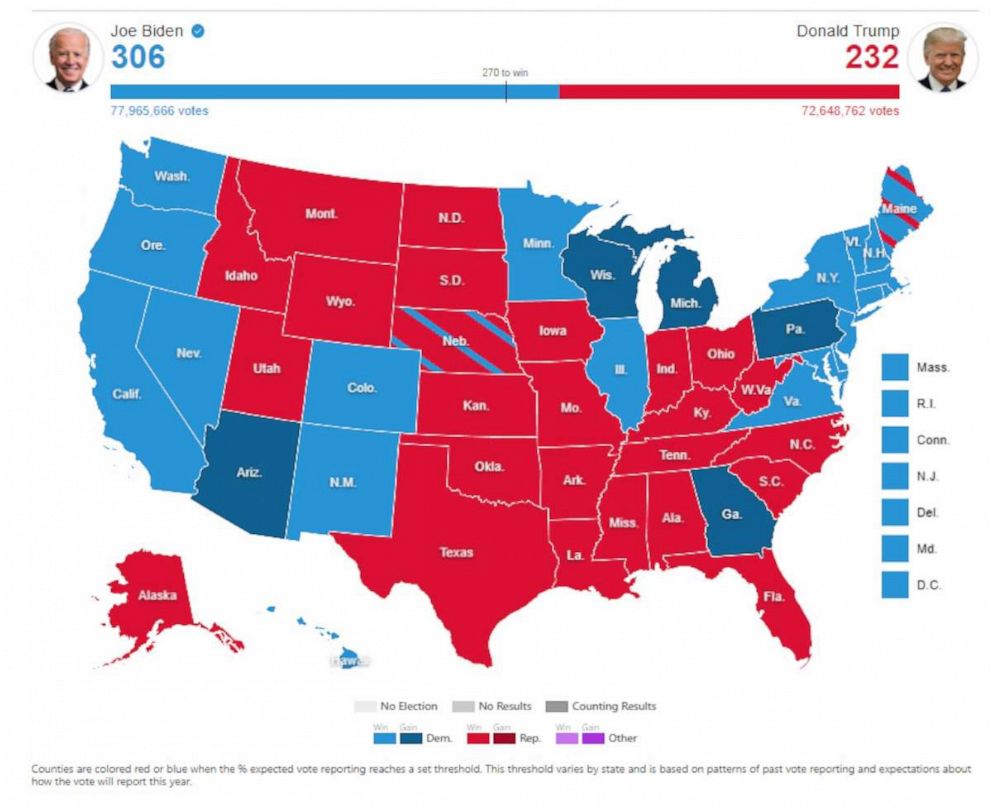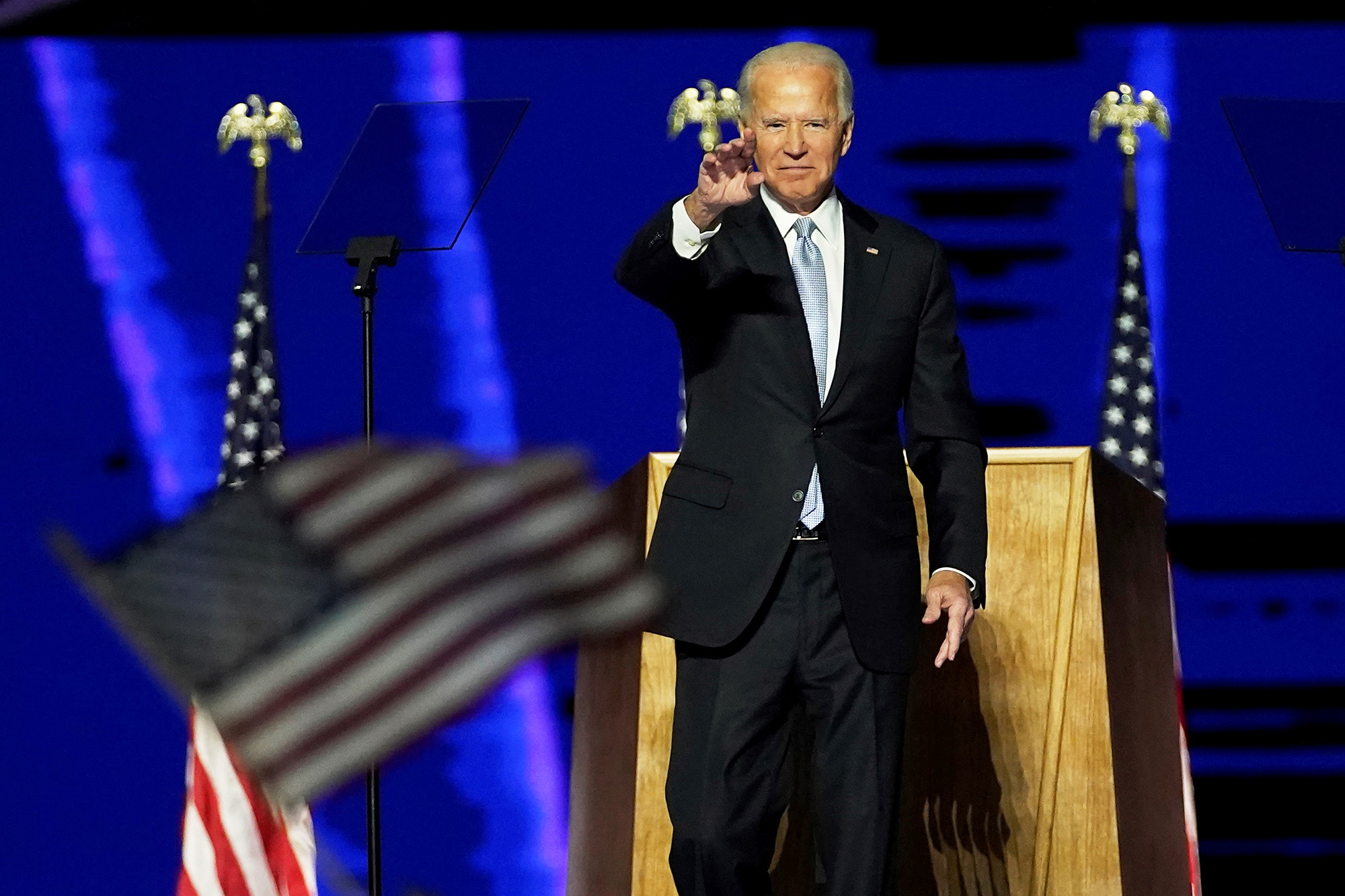ABC News' crowdsourced electoral map was only off by 1 state
Over 1 million unique users made their projections.
As pollsters, the people almost hit a bullseye.
With ABC News' interactive electoral map, users could make their own predictions for which states would go red or blue -- and which candidate would ultimately capture the necessary 270 electoral votes to win the presidency.
ABC News created a "People’s Pick" map based on individual state picks made by users between July 23 to Nov. 2. With the latest projections on Friday completing the Electoral College tally, we found that the crowdsourced map wasn't that off base. In fact, it was only off by one state, and 16 electoral votes. That's better than most polls, which had predicted a larger Biden lead.
The People's Pick projected former Vice President Joe Biden taking the election with 290 electoral votes to President Donald Trump's 248. With the most recent projections on Friday of Georgia for Biden and North Carolina for Trump, ABC News has projected that the final tally stands at 306 for Biden and 232 for Trump.
Here's a look at the People's Pick:
For comparison, here's a look at ABC News' projected final election results:

The People's Pick was only off by Georgia, which it had called for Trump.
But it correctly called 49 states and D.C. -- even down to the split electoral votes in Nebraska and Maine.
When it comes to crowdsourcing, the more people, the better, Jeff Howe, an assistant professor of journalism at Northeastern University and the originator of the term "crowdsourcing," told ABC News. A number over 100,000 is key, he added.
By Nov. 2, some 1.4 million unique users had created 2.6 million maps using ABC News' interactive election map.
With that sheer magnitude, "We start to see some really interesting crowdsourcing effects when you start to get to that level of participation, when you're tapping that number of active individuals' subjective intelligences," Howe said.
Such a large volume also "cancels out outliers," he said, such as people making all-blue or all-red maps.

The interactive map essentially "gamifies" election night, Raj Moorjani, a product manager for ABC News who worked on the map, said.
Users could start from scratch and toggle between red and blue for each state, or work off of templates, including ABC News Race Ratings, the FiveThirtyEight forecast and historical results going back to 2004.
In a departure from ABC News' 2016 interactive electoral map, and other similar forecasts, users picked just red or blue for states -- as opposed to "solid" or "leans" red or blue. This was meant to mimic what people would ultimately see on election night as states are called, Moorjani said. It also likely helped make the selection process easier.
This is the first time ABC News has determined a People's Pick, which was created based on projections for each state by unique users. A week before Election Day, ABC News began publishing the users' projections. Early on, like many polls, they had called Florida for Biden. But by Nov. 2, it had flipped to Trump, who ultimately has been projected to win the state.
The users also correctly called the battlegrounds of Arizona and Pennsylvania, which are projected to have flipped blue this year.
"I think you see wisdom of the crowds in your users' calls for the blue wall," Howe said. "As will become famously remembered from 2020, polls were way off again, and lots of Americans really believed that there was no way Trump could lose Pennsylvania."
The crowdsourced map may have also helped capture "shy voters" for both Biden and Trump, or insight from these voters' neighbors, Howe said, "to get closer in line with the ultimate results."
Users were still tinkering with the map in the days after the election, when several battleground states and the presidency had yet to be called. As of Friday, 3.6 million unique users had made 4.9 million maps.




